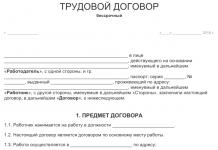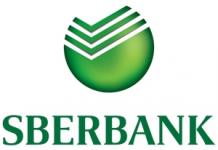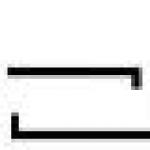“All professions are needed, all professions are important” - we all know this from childhood. The fact is that in the modern world everything is interconnected, so many terms of foreign origin have appeared, the meaning of which is unknown to most citizens. Realtors, image makers, copywriters, surveyors - you can’t tell right away what exactly these people do. The same can be said about back and front office specialists. Who are they, where do they work, what are their direct responsibilities?
Definition of a financial institution's front office
This term refers to a group of departments in organizations responsible for working with customers or clients. Front office specialists are on the front line, they are the face of the company. The success of the entire institution depends on their professionalism, competence, and friendliness. In such employees, they process applications for or obtain a loan, advise on any issues, distribute banking products, etc. That is, specialists constantly accompany the client from the moment he arrives at the bank branch until the conclusion of the transaction.
What is a back office?
This is an operational and accounting division that ensures the operation of departments that manage the assets and liabilities of the company. The back office is an eminence in gray. Clients and customers cannot evaluate the work of its specialists, although they invest a lot of effort in the prosperity of the business. There are such divisions in banks, investment companies, and organizations that carry out transactions in the securities markets. They employ from 3 to 15 people, the number of employees depends on the size of the institution.

Working in the back office of a bank involves preparing settlements for securities and funds for transactions concluded by the front office. Its employees are also responsible for monitoring compliance with limits, maintaining internal reports, and providing information for accounting. A back office specialist works only with counterparties; he does not collaborate with clients.
What does the middle office do?
This division can be called the link between the front and back offices. Its functions are quite vague. Bank specialists are mainly involved in drawing up and signing contracts, providing clients with various types of reports, accepting orders to carry out withdrawals, purchases and sales, etc. The middle office is also responsible for coordinating standard forms and regulatory documents with other departments, developing methodologies carrying out new operations. Its specialists in most cases work on assignments from frontline workers.
What are the responsibilities of back office specialists?
Employees of financial institutions must draw up agreements for the purchase and sale of securities and keep a log of transactions. The specialist monitors the re-registration of securities, since the transfer of ownership rights to the buyer from the seller must be made. The back office carries out this procedure on the basis of the transfer order contained in the register of the securities holder.

The new owner must receive all the necessary documents, and the specialist, in turn, controls the settlement process between the companies of the seller and the buyer. The back office employee has a huge responsibility, because the slightest mistake, which at first glance seems like a minor inaccuracy, can lead to large-scale problems. In the worst case, the company suffers significant losses due to the deal being declared invalid.
Comparison of front and back offices
These two divisions are opposite to each other. The front office is the face of the company. Specialists are always visible; the future of the organization depends on their professionalism and resourcefulness. The back office is work in the shadows. Not everyone knows the employees of the department by sight, but they are like busy bees, shoveling many important matters. All specialists work for the benefit of the company, but it is still important to draw a line between different departments so as not to shift the responsibilities of some onto the shoulders of others.
The front office and back office have different functionality. The first one works to increase the speed of customer service, maintain the reliability of the information received, and promptly register sales. The second is focused on sales analysis, preparing a card index of goods with prices, a pricing system, and monitoring the movement of products in warehouses.

The separation of divisions can occur both at the software and hardware levels. There is no obvious boundary between them, it is just a system of concepts. The separation of back and front offices is necessary on a psychological level. The head of the company must understand that more professional and experienced specialists are required to work in the first subsystem than in the second, since they have greater responsibility and more complex work.
The concept of a back-office system is firmly entrenched in the retail industry. This is the tool that allows you to consolidate and coordinate all business processes. In the battle for customers' wallets, the cash register - the front-office - is the front line. The rear that the command provides is the back office - the enterprise's trading system, covering all processes occurring in the store - from ensuring sales to analytical reporting. Whether the store owner will be a winner in this battle depends on how well it meets the challenges facing a particular enterprise and how effectively it works.
Systems are different
It must be said that today the term back office itself is somewhat vague. In the West, this means both the management component of the software and the accounting component. In Russia, due to the specifics of “national accounting,” software suppliers for stores have tried to move away from it, and the back office often means only the part that is responsible for managing business processes. In addition, there is a division between back-office and head-office, the first is a trading program installed at a retail outlet, the second is the head office system of a chain of stores, which manages the trading programs of individual objects. Meanwhile, many systems assume that the head-office is also a back-office, that is, the trading program installed at the head office of the network directly controls the processes occurring in the stores. And once upon a time this term simply meant a program for accounting for goods. However, these days are long gone.
As Mikhail Orlov, product manager of the back-office class software department at ATOL Group, noted, a modern back office can no longer be called just a commodity accounting system:
Nowadays, the back office is a full-fledged one, responsible for all the main business processes at a trading enterprise. The back-office system should include warehouse accounting, management of interaction with suppliers, pricing, preparation of goods for sale, discounting, interaction with, implementation of network exchange, production, personnel management and much more. At the same time, despite the completeness of the functional part, the back office must be easy to understand and manage, have a high speed of deployment at a retail facility and have stability and efficiency in processing various information. An important criterion for a good back-office solution is support for a large list of retail equipment.
Despite the variety of tasks, the functions of the back office come down to a few important points. Here is the opinion of Anton Murzin, director of the consulting agency GKTs:
First of all, the back office must divide the enterprise's business processes into several separate processes, each of which is performed by different employees with different access rights to information. This allows us to reduce the requirements for employee qualifications and solves the problem of ensuring the security of working with information. The main advantage of this approach is the ability to make the system as flexible as possible. For example, the most important function of a back-office program is retail price management. This is not as simple a task as it might seem. The price of an item sold separately may differ from the price of an item sold in small bulk packaging. The price of a product may also depend on what other products are purchased with it. Finally, the price may change when purchasing a product using a discount card and during various marketing promotions. The trading system must take all these points into account. And not just take it into account, but allow price changes to optimize profits. And this is also one of the goals of process separation. Sometimes the price of a product with its description and code is included in the product registration card itself, but the trading program loses flexibility when working with the cost of the product. Setting the price of a product is a separate business process, and in order to provide all of the above capabilities, it must be separated from the product accounting process. It is also important to separate the definition of management policy from the procedures for its direct execution. Determining purchasing policy is a responsible matter, which in a trade organization is carried out by management with the participation of qualified specialists. Less qualified managers can also execute it, that is, apply the established rules. In the same way, the discount policy should be set in the center and executed automatically directly at the checkout.
The second most important task of a back office program is to reflect what is happening in the store with inventory. Inventories are affected by several processes: product deliveries, sales, returns of low-quality and unsold goods. An accurate reflection of the situation in the store is created by consolidating in the trading program information about goods received from several sources: from cash registers, data collection terminals in the warehouse, etc. In addition, the system must take into account the movement of goods within the enterprise, for example, the presence of its own production. Further, there are also unaccounted “transactions” such as theft. That is, the system must take into account realities and allow data to be adjusted during inventory.
It is necessary not only to determine which goods were sold during the period - all commodity accounting programs can do this, clarifies Anton Murzin. - An important characteristic of an automation system is the ability to conduct kidney analytics - and in this indicator, different systems differ significantly. Are we talking about a one-time large purchase or constant demand for this product? Did demand grow or fall throughout the day? The size of the order depends on the answer to these questions. Does your system provide kidney analytics capabilities, and if so, how fully is it used - the answer to this question is important for the proper organization of goods flow.
All of the listed functions are standard for back-office systems, however, each system has its own characteristics in their implementation that determine its compliance with the tasks facing a particular store or chain.
Undoubtedly, with fairly formalized general operations, each retail format has its own requirements for the back office, says Mikhail Orlov. - Let’s say that for the cash-&-carry format the dependence of the price category on the number of goods purchased is very important; for clothing boutiques, the ability to keep inventory records with the so-called product characteristics (sizes, colors) is very important. In addition, for example, the discount policy is very important for these formats. A good back-office system should take all these requirements into account.
Chain stores also have special requirements for the system. In particular, such requirements include: the ability of the system to operate in real time with remote objects (or the ability to carry out fairly frequent synchronization), the ability for stores to operate autonomously in the absence of communication with the central office, and increased requirements for ensuring the security of data exchange. For example, for this purpose, a solution is used such as a single back office of the chain stores, which stores a database of all retail outlets. This allows you to eliminate one link in the trading program, simplifies and speeds up your work. The volume of transmitted information is reduced because the data comes only from the cash registers, and the database on the store server operates autonomously. Security increases, and almost all opportunities to change anything in the central database disappear. But, of course, this approach also has its disadvantages, which include somewhat less flexibility.
Market Trends
Today, the main direction of development in the back-office systems market is expanding the functions of the trading program to ensure complete automation of a wide variety of trading enterprises. For example, there is now a trend towards multi-format retail chains, and program producers have responded to this need. In particular, this possibility is achieved by using the modular structure of the complex. Moreover, each module implements its own highly specialized function, and the customer himself selects the set of necessary modules. If it is necessary to expand the capabilities of the trading system, simply purchase additional modules. Another direction of development is the need to take into account the emergence of new technologies. In particular, barcoding is widely used today, but RFID technology - radio tags - is already on the way.
The main trends in the retail market can be divided into two components, explains Mikhail Orlov. The first is the understanding that automation is needed by everyone, even the smallest retail enterprises, the second is higher requirements for the back-office functionality of large retail chains. Speaking about the first trend, it is worth noting that the owner of a small store has much more operational work and the cost of an error is very high, and sometimes critical for the entire business. If for the owner of a large trading enterprise the main task is strategic management and competent delegation of authority, then the owner of a small store has to do most of the work independently. Therefore, the understanding comes that a high-quality management system will be a faithful servant and assistant. It is thanks to this trend that almost every back office developer has solutions for small retail. As for the second trend, there are no longer enough standard back office functions for the head of a large business. There is a need to solve many problems in real time. Therefore, there is a great need for optimization of network communication technologies and advanced data analysis. Taking these requirements into account, developers offer new technologies that strive to make the process of solving many problems as efficient as possible, for example, ITida NetHive technologies, URDB from 1C and others. As for our developments, a special word must be said about ITida NetHive technology. This technology allows you to significantly speed up the process of data exchange in a chain of stores and significantly save on investments in automation for any retail chain enterprise. Many store chains are interested in implementing this technology.
In conclusion, there are a few more points that are important when choosing a back office system.
You need to understand the main thing: no high-tech automation will help if there is no clear organizational structure and a systematic approach to the implementation of business processes, advises Mikhail Orlov. - And when choosing a back-office system, try to install it and perform standard operations (receipt, revaluation, unloading to the cash register). Already at this stage it may become clear how suitable the system is for you.
According to Anton Murzin, the system must be modern and ensure the functioning of the business over the next 7-10 years: this is its minimum service life. Therefore, you should not put your business at risk by choosing a solution that is approaching the end of its life cycle. Easily scalable and expandable - these qualities are also necessary for a system focused on business development.
The crisis, which has made it more difficult to obtain loans, may become a driver for the development of information solutions in trade. The current situation forces companies to think about the efficiency of using working capital. It is impossible to solve the issue of increasing efficiency without having a comprehensive information system.
"Commercial equipment in the Urals" No. 3/2009
The front office is a technology for quickly recording all sales, which ensures the accuracy of incoming data and increases the speed of customer service. The functional system of this division also includes preparatory activities for pricing, a goods accounting system, control over turnover, price analytics and the availability of goods in warehouses. The specialists of this office, as they say, are on the front line. They represent the face of the company, and the success of the entire enterprise depends on them.
The front office is contrasted with another concept - the back office. Office fragmentation can occur at the software or hardware level. In a word, the separation occurs on one of the devices, which has different operating modes, or on computers. The back office can carry out its work without giving the client complete information, and the front office supports settings, for example, discount cards, takes into account trade turnover and setting prices.
Any information base has its own special structure and location of terminals that organize information. In this case, the terminal itself can be located at any distance or, conversely, quite close to the back office. It follows that a connection is established between the devices with real information storage media or using an Internet system.
Interaction
It is worth saying that the front office, which is located remotely, does not have a stable connection between the front and back office. Their cooperation occurs with the help of online verifiers or through external files. In other words, there is no need for continuous communication between offices, since pricing for accounting for retail goods occurs at the beginning of the day. Next, the turnover for the working day is recorded, and sales are recorded the next day.
In particular, it should be mentioned that the formation of a stable connection between offices involves the use of expensive software solutions that allow work to be carried out by multiple users. A temporary connection does not make it possible to timely correlate, for example, prices with a card index or receive reports on turnover for the past day. The choice of front office directly depends on the goals of introducing an automated system and the needs of the client.
Finance
Definition of front, middle and back office terms. What is it like to work in the back office of a bank?
June 16, 2014“All professions are needed, all professions are important” - we all know this from childhood. The fact is that in the modern world everything is interconnected, so many terms of foreign origin have appeared, the meaning of which is unknown to most citizens. Realtors, image makers, copywriters, surveyors - you can’t tell right away what exactly these people do. The same can be said about back and front office specialists. Who are they, where do they work, what are their direct responsibilities?
Definition of a financial institution's front office
This term refers to a group of departments in organizations responsible for working with customers or clients. Front office specialists are on the front line, they are the face of the company. The success of the entire institution depends on their professionalism, competence, and friendliness. In the banking industry, such employees process applications for opening a deposit or obtaining a loan, advise on any issues, distribute banking products, etc. That is, specialists constantly accompany the client from the moment he arrives at the bank branch until the conclusion of the transaction.
What is a back office?
This is an operational and accounting division that ensures the operation of departments that manage the assets and liabilities of the company. The back office is an eminence in gray. Clients and customers cannot evaluate the work of its specialists, although they invest a lot of effort in the prosperity of the business. There are such divisions in banks, investment companies, and organizations that carry out transactions in the securities markets. They employ from 3 to 15 people, the number of employees depends on the size of the institution. 
Work in the back office of a bank involves preparing management reports, performing securities and cash settlements for transactions concluded by the front office. Its employees are also responsible for monitoring compliance with limits, maintaining internal reports, and providing information for accounting. A back office specialist works only with counterparties; he does not collaborate with clients.
Video on the topic
What does the middle office do?
This division can be called the link between the front and back offices. Its functions are quite vague. Bank specialists are mainly involved in drawing up and signing contracts, providing clients with various types of reports, accepting orders to carry out withdrawals, purchases and sales, etc. The middle office is also responsible for coordinating standard forms and regulatory documents with other departments, developing methodologies carrying out new operations. Its specialists in most cases work on assignments from frontline workers.
What are the responsibilities of back office specialists?
Employees of financial institutions must draw up agreements for the purchase and sale of securities and keep a log of transactions. The specialist monitors the re-registration of securities, since the transfer of ownership rights to the buyer from the seller must be made. The back office carries out this procedure on the basis of the transfer order contained in the register of the securities holder. 
The new owner must receive all the necessary documents, and the specialist, in turn, controls the settlement process between the companies of the seller and the buyer. The back office employee has a huge responsibility, because the slightest mistake, which at first glance seems like a minor inaccuracy, can lead to large-scale problems. In the worst case, the company suffers significant losses due to the deal being declared invalid.
Comparison of front and back offices
These two divisions are opposite to each other. The front office is work with clients, the face of the company. Specialists are always visible; the future of the organization depends on their professionalism and resourcefulness. The back office is work in the shadows. Not everyone knows the employees of the department by sight, but they are like busy bees, shoveling many important matters. All specialists work for the benefit of the company, but it is still important to draw a line between different departments so as not to shift the responsibilities of some onto the shoulders of others.
The front office and back office have different functionality. The first one works to increase the speed of customer service, maintain the reliability of the information received, and promptly register sales. The second is focused on sales analysis, preparing a card index of goods with prices, a pricing system, and monitoring the movement of products in warehouses. 
The separation of divisions can occur both at the software and hardware levels. There is no obvious boundary between them, it is just a system of concepts. The separation of back and front offices is necessary on a psychological level. The head of the company must understand that more professional and experienced specialists are required to work in the first subsystem than in the second, since they have greater responsibility and more complex work.
What is back office and front office? What are their functions and differences?
Front office(English front office) is a structural division of the company, whose competence includes, first of all, working with and for clients, rather than performing secondary ones, such as service support, risk management, accepting complaints, and carrying out other ordinary operational processes.
The name of this division of the company is due to the fact that the front office staff is always in front, in full view of customers, while the service staff is “invisible” to consumers, and they may not even be aware of their existence.
In companies of various profiles, the front office includes different types of activities. For example, in financial corporations, the front office is responsible for such areas as sales, trading, mergers and acquisitions (M&A).
Front office managers are those who directly ensure the company's profit. Some people question the equity research function because... Such analysts do not directly perform the work that brings in money, such as sales employees. However, this is not true, since those who work in asset analysis have to see clients face to face almost more often than anyone else. Meanwhile, traders almost never see their clients in person, but nevertheless they work in the front office.
Traditionally, positions in the front office are more prestigious and highly paid than in the back office. In investment banks and other financial institutions, getting a job in the front office is the hardest job. There are very high demands on both formal education and personal qualities.
Back office(English back office) are departments of a corporation that perform routine, administrative, service functions of business management as such. Back office functions also include IT (database administration, support service), accounting, and human resources department. Statistical and analytical accounting of sales, purchases, warehouse balances, archiving - all this can also be the responsibility of the back office. In banking institutions, back office tasks include clearing operations, routine cash management services, etc.
The term back office comes from the times when the layout of company premises was such that the front office was visible in the foreground (so that clients could easily and quickly enter the company and find the desired employee with whom they were dealing), while in the “backyard” there was the production itself, administrative offices, product development and testing departments, warehouses, etc. Needless to say, company management has always strived to ensure that the front office makes the best impression. To do this, they did expensive renovations and invested money in interior design.
The back office area was often dirty, gloomy and not very well maintained. Her presentability was not particularly monitored, because... clients still didn't show up there. However, back office staff in most cases make the greatest contribution to the development of the company. Today, the back office is not necessarily geographically located near the headquarters. On the contrary, they are trying to move it to places where costs are lower (for example, to the countries of Southeast Asia). Also today, the functions performed by the back office are often outsourced.
The importance and significance of the back office is often underestimated. However, his role is valuable to the success of the business for at least three reasons:
- Maintaining the company's reputation. In a highly competitive environment, a company's reputation is extremely important. Back office employees, while doing their job, also support the name of their company. For example, call center specialists, service support, and service personnel, when communicating with clients, leave a favorable impression and strive to fully satisfy his wishes.
- Management of risks. As a rule, top managers lazily read ready-made financial or other reports, without really thinking about how much work and effort it cost ordinary workers. Since management decisions are made on the basis of data, facts, calculations, figures, their accuracy and correctness is extremely important. Accordingly, those who enter the initial data and make the calculations perform a very responsible job and reduce the risk for senior management of making an ineffective decision.
- Reward. Although back office workers do not directly generate money for the company as front office workers do, they can undermine the efforts of their colleagues with ineffective activities and decisions. In addition, new cost-saving methods or innovation proposals proposed by the back office can directly or indirectly increase the company's profits.
If we move away from management terminology and speak somewhat cynically, then the front office is cool guys in expensive suits, slightly arrogant and overly self-confident. The front office has a more presentable and representative appearance than the back office. Front office employees are sure that they are the most important, and the back office is a periphery, a gray zone, a place for dull, mediocre individuals. Salary and bonuses vary accordingly.
Today, the terms back office and front office are most often used in the context of investment banking, where this division is most clearly expressed.




















